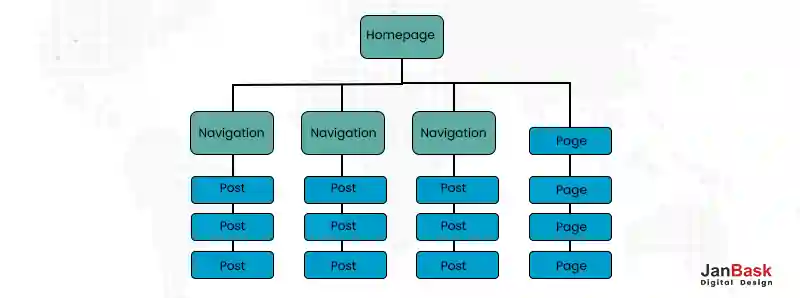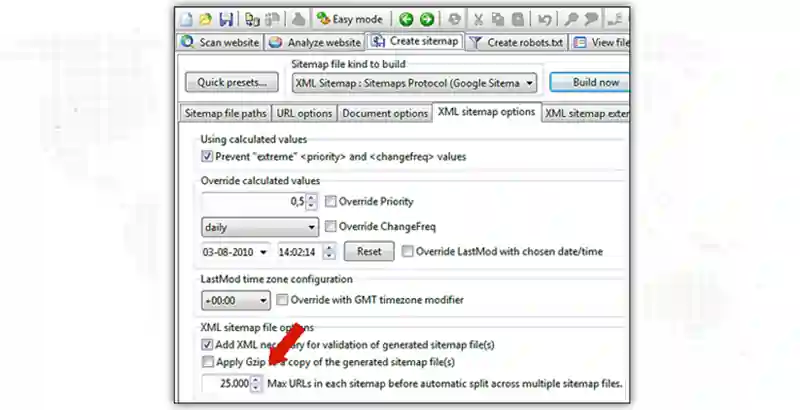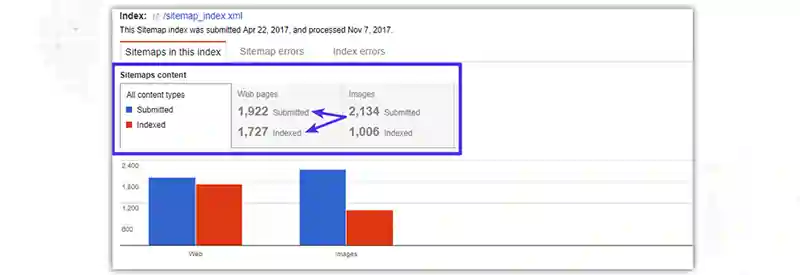
Would you like to visit a brand that does not have all the web pages on its website? Imagine moving from one site to another to understand the entire brand.
That would be a challenging task, right?
Sitemaps are therefore important as they can link all your web pages together on your website. In simple words, sitemaps are the home to all your brand links available online. Professional SEO services put in a lot of hard work to get a sitemap of the website and hence it is essential to choose the right SEO company for this task.
Simultaneously, it has been observed that many SEO services are conflicted about whether or not to generate sitemaps. Some people think they can live without it and don't need it. Others are adamant that sitemaps are essential for every website.
Sitemaps are lucrative for your website, is the succinct response to this conundrum. If you don't have one, you might encounter difficulties, but you won't ever suffer consequences for it. So, if you don't already have one, hire an SEO agency and get a sitemap of the website just to be on the safe side.
But first, let's take a closer look from an SEO company’s perspective at sitemaps to better understand their purpose of using them in SEO:
To start with the fundamentals of an SEO company, a sitemap file contains details on the pages, videos, photos, and other assets on your website. It's crucial for several reasons, including:
You should be aware that there are mainly two sitemap file formats: HTML and XML before we continue.
Here’s how SEO services have diversified them:
These types of sitemaps in SEO are helpful to website visitors. It aids in their navigation of the website's many web pages. Another type of website that provides the complete website structure is the HTML sitemap.
It can be improved by incorporating CSS to make it seem nicer because it is user-visible. These types of sitemaps in SEO are beneficial for search engine optimization.
Instead of users, an XML sitemap is created for search engine bots. Your XML sitemap will be used to communicate technical information about your website, such as the number of pages active on your website and how frequently you update them.
In the event that something on your website changes, you should inform search engines. Search engine bots are informed by new or updated material that you are probably to be an expert in your industry or specialty and that your data is probably going to be relevant or beneficial.
Prioritizing your web pages is one of the top sitemap best practices you should adhere to. With Google's sitemaps protocol, you can rate your websites and assign them a score from 0.1 and 1.
According to an SEO expert, pages with higher scores would be crawled more frequently than those with lower scores.
As a general guideline from the best SEO company, give your dynamic pages with often updated information better scores.
Avoid the impulse to give every page a high rating. Regardless of how much you appreciate it, search engines are far more unbiased. Your static and dynamic pages won't be distinguishable from them, which could cost you some of the advantages.
Utilizing a sitemap-generator tool to build sitemaps is another beneficial best practice for sitemaps. Sitemaps can be created utilizing tools much more quickly and easily than by hand.
You may install the Yoast plugin and instantly enable an XML sitemap from the browser itself in the case of a WordPress website. You may make XML sitemaps for other websites using Google XML Sitemaps.
The next step is to use your Google Search Console to upload the sitemap to Google.
The location of HTML sitemaps is an essential initiative for sitemap best practices. This makes information accessible to users of your website.
HTML sitemaps are basically made to make it simple for users to navigate your website. Additionally, the best sitemaps in SEO practices that make it simpler for users to explore your website is to have sitemaps directly on the homepage. Instead of searching through numerous categories and subcategories separately, people can use sitemaps and the collection of URLs to get what they're looking for.
This tactic has the additional benefit that search engines begin their crawl from your homepage. Therefore, if sitemaps are present on the homepage, it will be simpler to find any new links that are added.
In order to get identical results with XML sitemaps, you must put these in the root directory.
One of the sitemaps recommended practices, this is only applicable to medium-sized to huge websites. There may be too many links on large websites to include in only one sitemap. As a result, if each category has a sufficient number of links, you can make a distinct sitemap for it.
You may avoid turmoil by doing this, which will help you better arrange your affairs. If you have several links, it could mislead your viewers and make you appear to the search engines to be a link farm.

The usage of relevant versions in your sitemaps is another method of limiting URLs. For instance, just the primary product page URL should be included in your sitemap if you have many URLs for various product versions. To specify to search engines which of them is the primary page, use the "link rel=canonical" element.
The URLs that you do not wish search engines to index or crawl are known as noindex URLs. From an SEO agency’s perspective, these might be useful pages for your website that you don't want to appear in search results. It's possible that you inserted the Noindex tag to such pages using the robots.txt or the meta robots approach.

There is no use in including these in your sitemaps if you don't want them to be indexed because you will be squandering your crawl money. Additionally, it sends a confusing signal to search engines as per professional SEO services.
Something should be significant enough to get indexed if it is on your sitemap. Additionally, "Noindex" tags convey the exact opposite idea, namely that certain URLs do not require indexing. This inconsistent approach is perplexing and ought to be avoided.
Therefore, to preserve consistency and conserve your crawl budget, adhere to the best practice of sitemaps and exclude every noindex page present on your sitemap.
Additionally, dynamic sitemaps are easier for browsers to crawl because they are quicker to retrieve. And whereas a static sitemap is readily compromised, these are less likely to be.
Therefore, if you have a huge website, using dynamic sitemaps is a smart practice.
Sitemaps aid in website navigation for both users and search engines. They are helpful files in either case. Your sitemap is flexible and can be modified as needed. Re-upload your sitemap thereafter to ensure that Google is always able to access your most recent content.
Site audits assist you in finding any issues that may affect your website's ability to be crawled. Call on the professionals at JanBask Digital Design to regularly audit your website for these common SEO mistakes so that you can fix them before uploading your sitemaps on search engines.
Looking for Premiere SEO Services?

B
This article is really useful resource on understanding the importance of sitemaps in SEO
C
Tremendous information. It’s Very clear and useful
J
Many people actually don’t know about the google search console that own websites. Majority of website owners don’t even know about xml sitemaps.
E
Very interesting….bookmarked for future reference.
R
Awesome post that how important in SEO
K
I’m trying to make the best SEO, thinking that sitemap was not so important, but now I understand how the pages were not found or positioned. Thank you for the brief explanation.
A
Blog is an informative guide. I will use this for my business.
T
I’m using XML sitemap and nowadays I can see many top sites have used HTML sitemap. I observed HTML sitemaps are more powerful than XML. but now by reading this article I have cleared my doubts.
C
I loved the part where you used your Understanding of The Importance of Sitemaps In SEO and language to intertwine the two characters.I’ve read your team’s article before! I’ve made sure to keep your name on my list to remind me to read more of your stuff.
F
I can’t remember the last time I read something this good! You’ve made my day I didn’t even know was possible. The way your team explains the complex topic about The Importance of Sitemaps In SEO anyone can understand easily. Thanks for sharing this.
Z
You’re on my list! I’m so grateful to have had a chance to read this masterpiece from your team. Your team is my inspiration. Thank you for taking the time to write this. It’s one of the best things I’ve ever read. I have always enjoyed reading your articles to them at night.
E
You are my inspiration. Thank you for taking the time to write this article about The Importance of Sitemaps In SEO. It’s one of the best things I’ve ever read. I think your team has got real talent. Please post some related stuff to read more.
W
Some people think that writing on The Importance of Sitemaps in SEO is easy. But I know how difficult it is to come up with ideas and turn them into meaningful and interesting content. No words, just applause. Thank you for sharing this article with us.